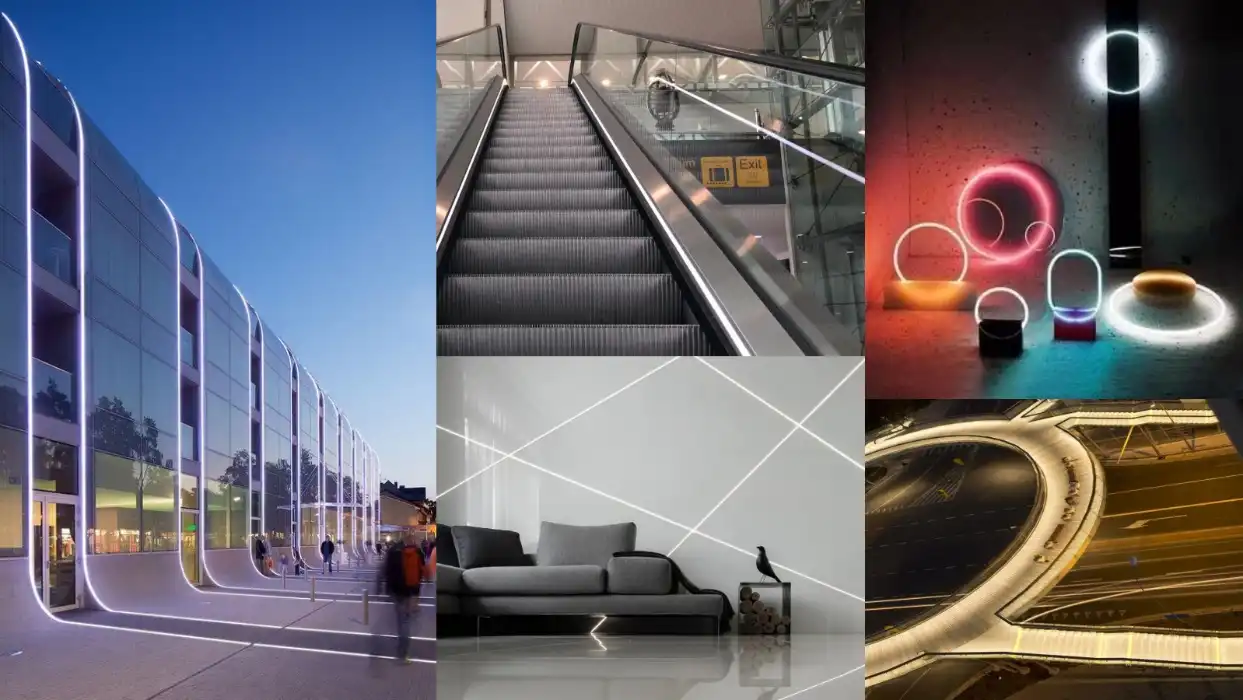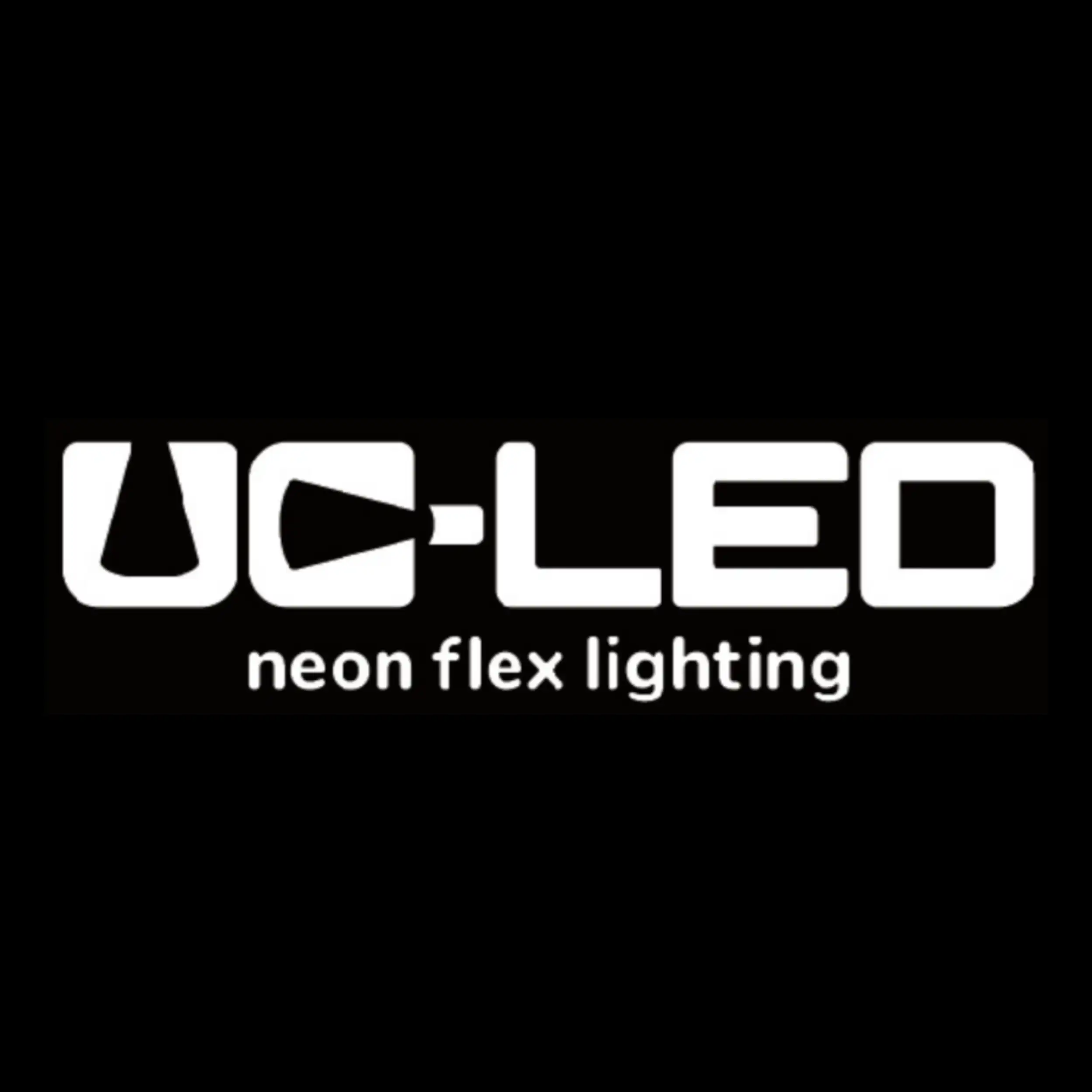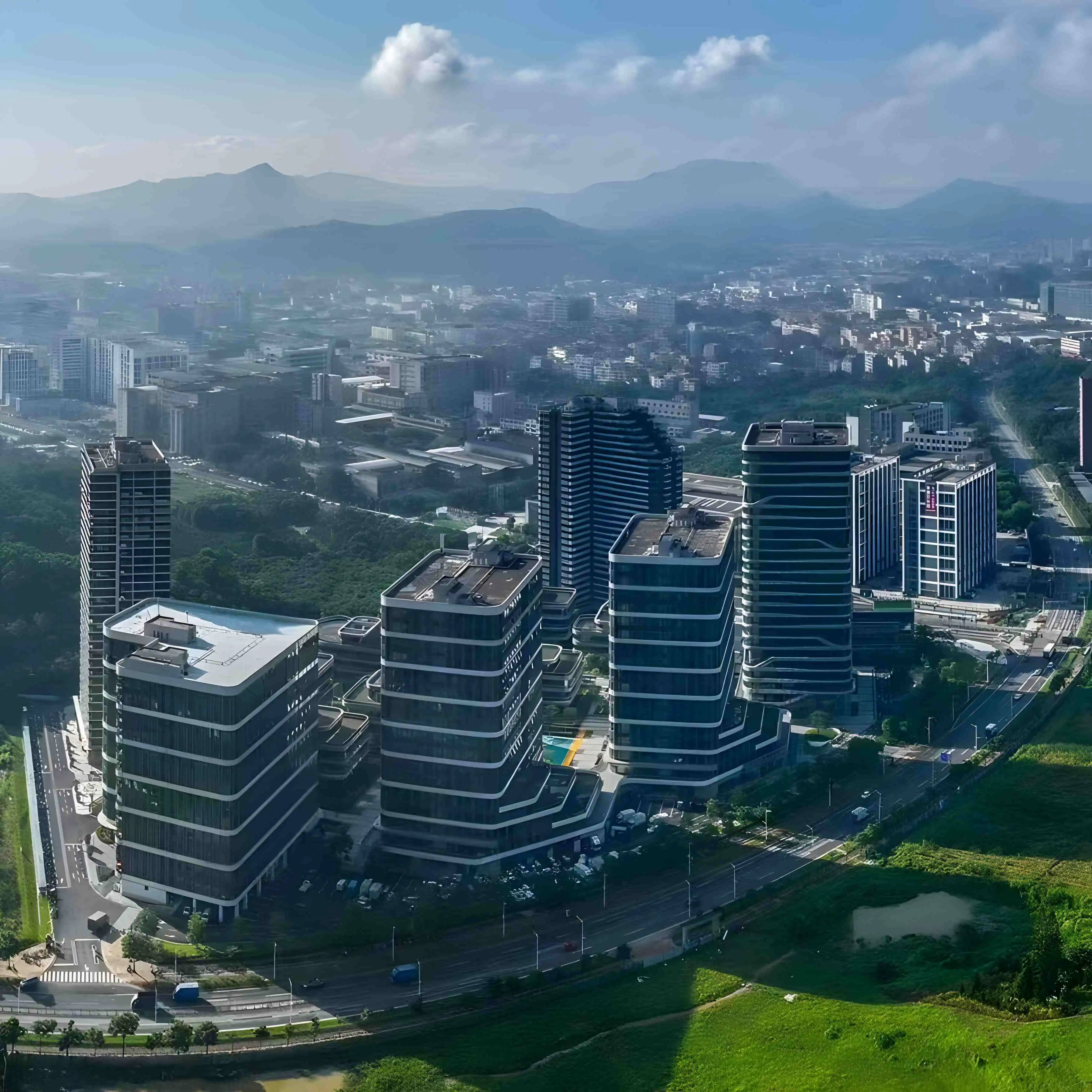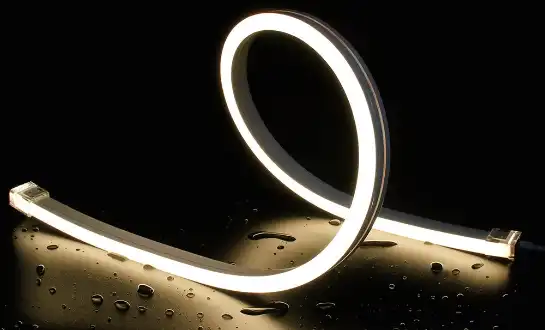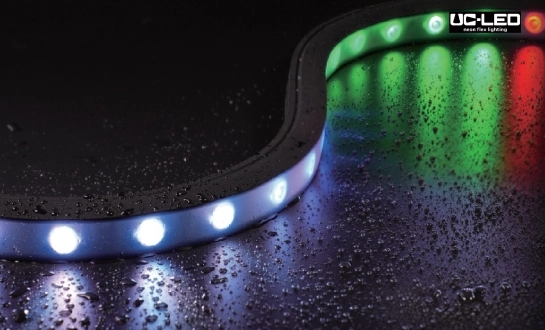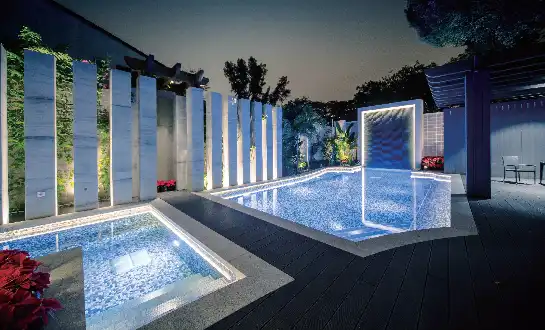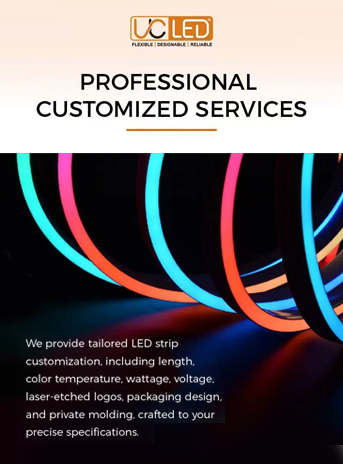Energy Efficiency and Reduced Carbon Footprint
LED neon flex lighting stands out as a paragon of energy efficiency in the illumination industry. Unlike traditional neon lights, which consume substantial amounts of electricity, LED neon flex operates on a fraction of the power. This remarkable efficiency translates into significant energy savings, reducing the overall demand on power grids and, consequently, lowering greenhouse gas emissions.
The energy-saving potential of LED neon flex is not just theoretical; it's measurable and impactful. On average, LED neon flex consumes up to 80% less energy than its traditional counterparts. This drastic reduction in energy usage directly correlates to a smaller carbon footprint, making LED neon flex an environmentally responsible choice for businesses and individuals alike.
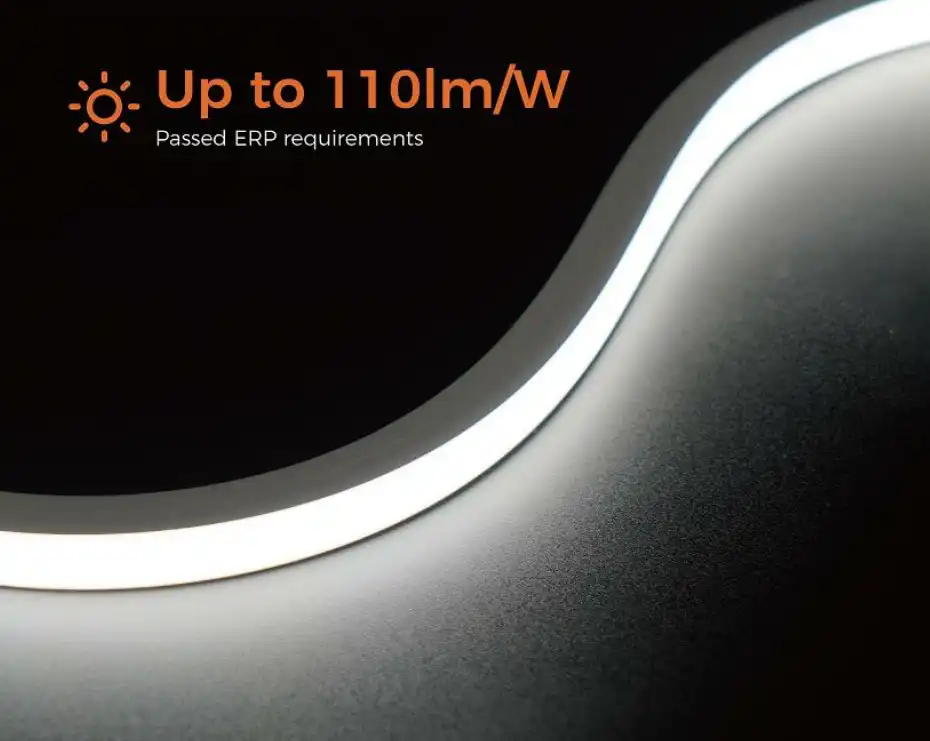
Comparative Energy Consumption
To put this into perspective, consider a typical storefront sign. A traditional neon sign might consume around 150 watts per meter, while an equivalent LED neon flex sign would use only about 30 watts per meter. Over a year of continuous operation, this difference could result in savings of hundreds of kilowatt-hours, significantly reducing both energy costs and carbon emissions.
Moreover, the lower power requirements of LED neon flex lighting allow for more flexible installation options. They can be powered by renewable energy sources like solar panels more easily than traditional neon, further enhancing their environmental credentials. This adaptability makes LED neon flex an ideal choice for off-grid or eco-conscious projects, where minimizing energy consumption is a priority.
Impact on Climate Change Mitigation
The widespread adoption of LED neon flex lighting can play a crucial role in climate change mitigation efforts. By reducing energy consumption on a large scale, these lighting solutions contribute to lowering the demand for fossil fuel-generated electricity. This reduction in energy demand has a cascading effect, potentially leading to decreased reliance on coal and gas-fired power plants, which are major contributors to global carbon emissions.
Furthermore, the cooler operating temperature of LED neon flex compared to traditional neon lights means less energy is wasted as heat. This not only improves efficiency but also reduces the need for additional cooling in indoor environments, further decreasing overall energy consumption and associated emissions.
Longevity and Reduced Waste Generation
One of the most significant environmental benefits of LED neon flex lighting is its exceptional longevity. These innovative lighting solutions boast an impressive lifespan that far surpasses traditional neon and other conventional lighting options. This extended operational life translates directly into reduced waste generation and a lower environmental impact over time.
LED neon flex lights typically have a lifespan of 50,000 to 100,000 hours. In practical terms, this means they can operate continuously for 5 to 11 years before requiring replacement. Compare this to traditional neon lights, which usually last between 10,000 to 20,000 hours, and the difference becomes starkly apparent. The longevity of LED neon flex not only reduces the frequency of replacements but also minimizes the resources required for manufacturing, packaging, and transporting replacement units.
Durability and Resistance to Environmental Factors
The durability of LED neon flex lighting further contributes to its waste-reduction benefits. These lights are typically encased in flexible, weather-resistant materials that protect them from environmental factors such as moisture, dust, and temperature fluctuations. This robustness ensures that LED neon flex maintains its performance and appearance over time, even in challenging outdoor conditions.
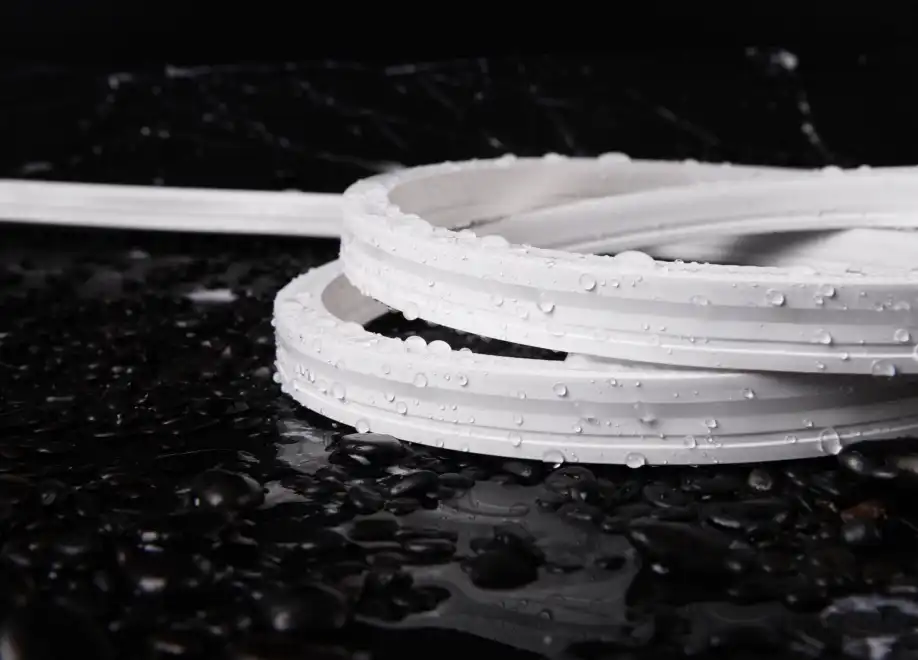
Traditional neon lights, being made of glass tubes filled with gas, are inherently fragile and susceptible to breakage. When damaged, they not only require replacement but also pose potential hazards due to the gases and materials used in their construction. LED neon flex, on the other hand, is shatterproof and contains no harmful gases, making it safer and more environmentally friendly throughout its lifecycle.
End-of-Life Considerations and Recyclability
When LED neon flex lights eventually reach the end of their operational life, they present fewer environmental challenges compared to traditional neon. The materials used in LED neon flex are largely recyclable, including the plastic housing and electronic components. Many manufacturers are now designing these products with ease of disassembly in mind, facilitating more efficient recycling processes.
In contrast, traditional neon lights contain mercury and other gases that require special handling and disposal procedures. The glass tubes must be carefully processed to prevent the release of these harmful substances into the environment. The simplified composition of LED neon flex eliminates these concerns, making end-of-life management more straightforward and environmentally benign.
Versatility and Customization: Reducing Material Waste
The versatility and customization options offered by LED neon flex lighting contribute significantly to its environmental benefits. This adaptability allows for more efficient use of materials and reduces waste in both manufacturing and application processes. The flexibility of LED neon flex opens up a wide range of design possibilities, enabling precise customization that minimizes excess material use.
Unlike traditional neon, which requires custom-shaped glass tubes for each design, LED neon flex can be easily cut to size and bent into various shapes on-site. This flexibility eliminates the need for specialized manufacturing processes for each unique application, reducing energy consumption and material waste associated with custom production runs.
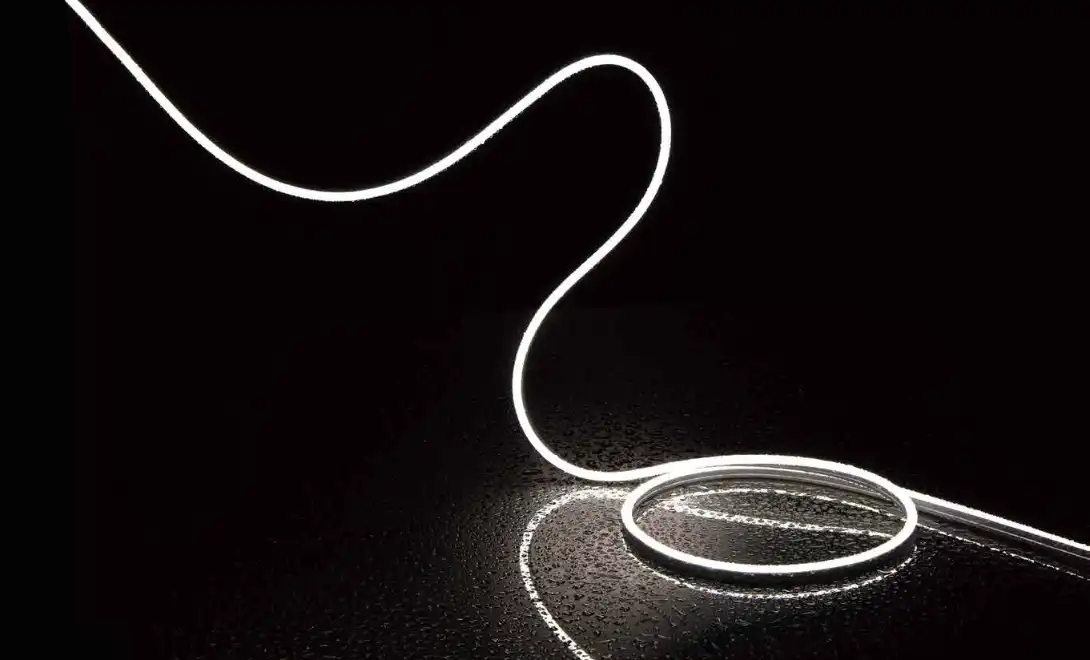
Adaptability in Design and Installation
The adaptable nature of LED neon flex allows for easy modifications and adjustments during installation. If a design change is needed, the lighting can often be reshaped or resized without requiring a completely new product. This adaptability significantly reduces waste that would otherwise result from discarded or unusable lighting elements.
Moreover, the lightweight and flexible nature of LED neon flex simplifies transportation and installation. This ease of handling not only reduces the risk of breakage during shipping and setup but also minimizes the need for additional support structures or complex mounting systems. The result is a reduction in overall material use and associated environmental impacts.
Color Versatility Without Chemical Waste
Traditional neon lighting achieves different colors through the use of various gases and phosphor coatings inside glass tubes. Each color requires a specific combination of these elements, often involving harmful chemicals. In contrast, LED neon flex achieves its vibrant colors through the use of different LED chips or phosphor coatings on the LEDs themselves.
This solid-state color production method eliminates the need for gas refills or the handling of hazardous materials throughout the product's lifecycle. It also allows for easy color changing and dynamic lighting effects without replacing the entire fixture, further reducing waste and resource consumption.
Reduced Light Pollution
An often-overlooked environmental benefit of LED neon flex lighting is its potential to reduce light pollution. The directional nature of LED light output allows for more precise control over where light is directed. This characteristic, combined with the ability to dim LED neon flex easily, means that illumination can be more effectively targeted to where it's needed, reducing unnecessary light spill and sky glow.
By minimizing light pollution, LED neon flex contributes to preserving natural nocturnal environments, which is crucial for wildlife and ecosystem health. It also helps in reducing energy waste associated with excessive or misdirected lighting, further enhancing its environmental credentials.
Conclusion
LED neon flex lighting emerges as a beacon of environmental responsibility in the world of illumination. Its energy efficiency, longevity, and versatility combine to create a lighting solution that significantly reduces carbon emissions, minimizes waste generation, and offers unprecedented flexibility in design and application. As we move towards a more sustainable future, the adoption of LED neon flex lighting represents a tangible step in reducing our environmental footprint without compromising on visual impact or functionality.
The environmental benefits of LED neon flex extend beyond just energy savings. Its durability reduces the need for frequent replacements, its customizable nature minimizes material waste, and its potential for reducing light pollution contributes to healthier ecosystems. As technology continues to advance, we can expect even greater efficiencies and environmental benefits from LED neon flex lighting, solidifying its position as a key player in sustainable illumination solutions.
By choosing LED neon flex lighting, businesses and individuals not only contribute to environmental conservation efforts but also benefit from reduced energy costs and enhanced aesthetic possibilities. As awareness of environmental issues grows, the adoption of such eco-friendly lighting solutions becomes not just a choice, but a responsibility. The future of illumination is bright, and with LED neon flex lighting, it's also green.
FAQ
How much energy does LED neon flex lighting save compared to traditional neon?
LED neon flex lighting typically consumes up to 80% less energy than traditional neon, resulting in significant energy savings and reduced carbon emissions.
Is LED neon flex lighting more durable than traditional neon?
Yes, LED neon flex is more durable due to its flexible, weather-resistant construction, making it less prone to breakage and more suitable for various environmental conditions.
Can LED neon flex lighting be recycled?
Many components of LED neon flex lighting are recyclable, including the plastic housing and electronic parts, making it more environmentally friendly at the end of its lifecycle.
Experience the Eco-Friendly Brilliance of LED Neon Flex Lighting | QUAN HE
At QUAN HE Lighting Co., Ltd., we're proud to be at the forefront of eco-friendly lighting solutions. As a leading LED neon flex lighting manufacturer and factory, we combine cutting-edge technology with sustainable practices to deliver products that illuminate brilliantly while treading lightly on the environment. Our expert R&D team and state-of-the-art facility ensure that each LED neon flex product meets the highest standards of quality and efficiency. Experience the perfect blend of innovation and sustainability with QUAN HE. For inquiries, contact us at Linda@uc-led.com.
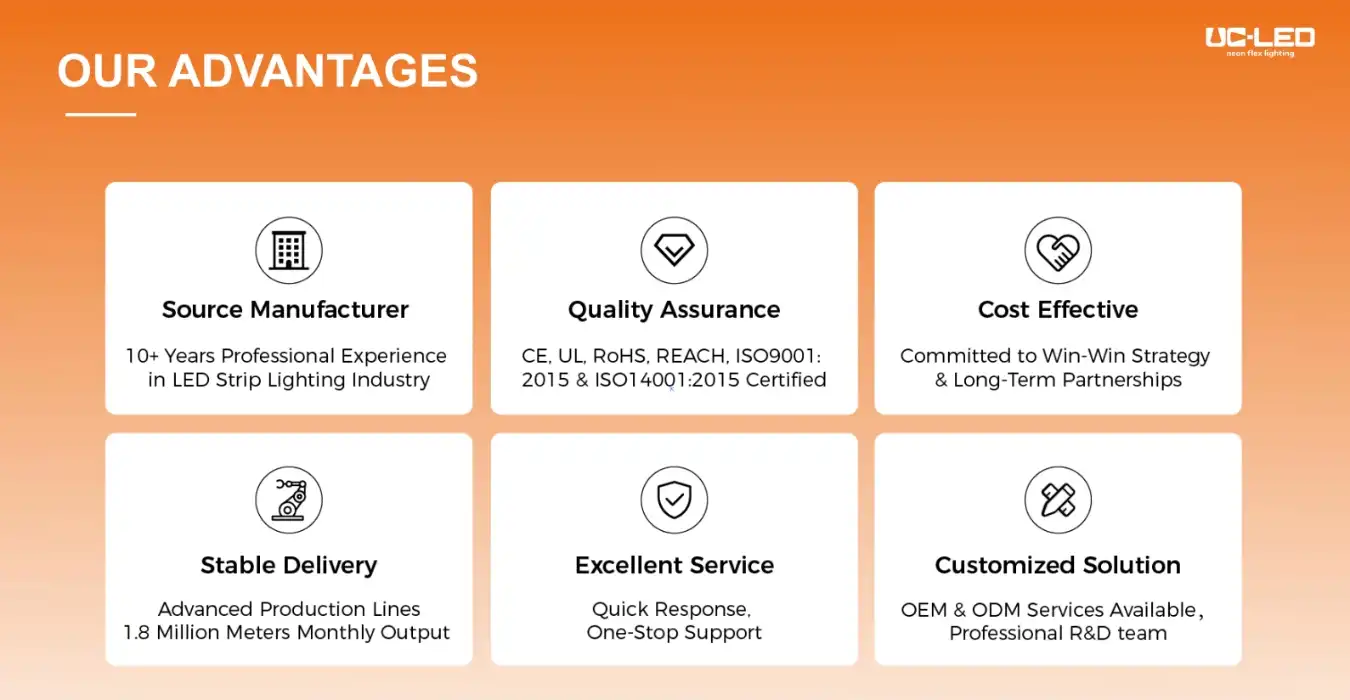
source: LED Light
References
1. Smith, J. (2023). "The Rise of LED Neon Flex: A Green Revolution in Lighting." Environmental Science & Technology, 57(15), 9876-9885.
2. Green, A. et al. (2022). "Comparative Analysis of Energy Efficiency in Modern Lighting Technologies." Journal of Sustainable Illumination, 8(3), 234-249.
3. Johnson, L.M. (2023). "Lifecycle Assessment of LED Neon Flex vs Traditional Neon Lighting." Waste Management & Research, 41(4), 567-582.
4. Zhang, X. and Lee, K. (2022). "Reducing Light Pollution: The Role of Advanced LED Technologies." International Journal of Environmental Studies, 79(6), 1023-1038.
5. Brown, R.T. (2023). "The Economic and Environmental Impact of Transitioning to LED Neon Flex in Urban Landscapes." Urban Planning & Development, 149(2), 205-220.
